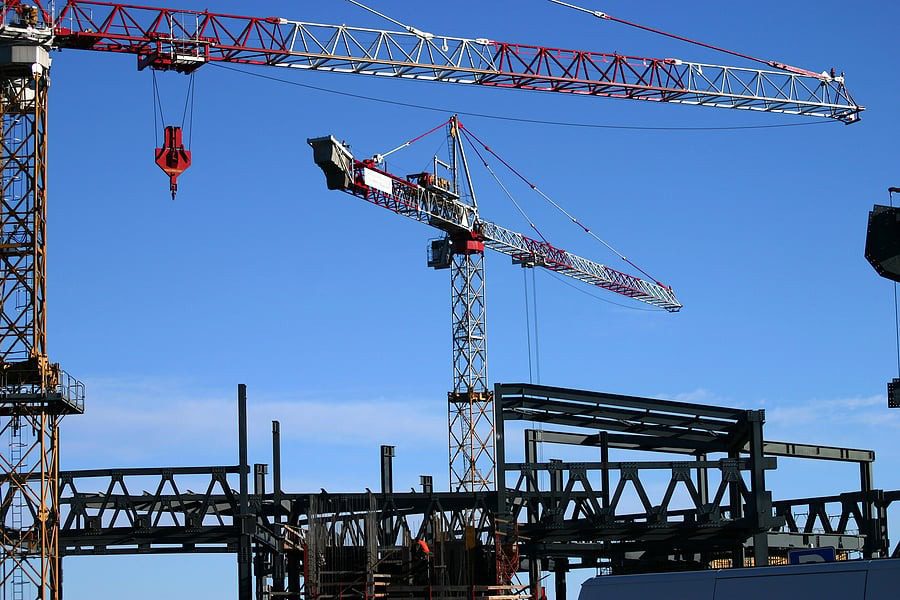The Impact of Structural Steel in Architecture
Structural steel has had a significant impact on architecture for centuries, allowing builders and designers to push the boundaries of construction and create buildings that are taller, stronger, and more innovative than anything that can be done with other materials. Although structural steel has been a key component in construction for many years, new innovations, techniques, and methods are contributing to even further advancements in architectural design.

Historical Evolution of Structural Steel in Architecture
Steel as a building material can be traced as far back as the 6th century, when cast iron was used in construction. However, structural steel was not regularly used until the mid-1800s, when the new Bessemer process enabled large-scale production of steel at low costs. After this breakthrough, steel was used far more frequently. In the late 1800s, the steel frame system was developed, using steel columns and beams to support the load of the building which allowed for taller structures that were more robust. The Eiffel Tower construction, as well as the Home Insurance Building in Chicago, which is considered the first skyscraper, showed the potential of structural steel in architectural design.
As structural steel continued to evolve during the 20th century, new fabrication techniques and steel alloys enhanced the strength and versatility of steel, and advancements in welding technology allowed for more efficient and cost-effective construction. Computer Aided Design (CAD), Building Information Modeling (BIM), the use of recycled steel, and innovative design techniques continue the evolution of structural steel in architectural design.

Strength and Versatility
Structural steel is the most widely used material in modern construction due to the exceptional ratio of strength to weight. Structural steel is preferred by architects as it has high load-bearing capabilities while still able to mold to beautiful and creative designs. The most creative designs can never be built without a material that can be bent to the vision, but still have structural integrity. Many structures, such as the Wainwright Building in St. Louis, Missouri, the Home Insurance Building in Chicago, and other early skyscrapers demonstrate the strength of structural steel. Other structures, such as the Jay Pritzker Pavilion in Millennium Park, Chicago, demonstrate the versatility of structural steel and the ability to bend the steel into innovative and creative designs.
As natural disasters and extreme weather become more prevalent, having buildings with the strength to withstand extreme forces is even more important. Structural steel buildings can be designed to be earthquake and fire resistant, which provides the resilience necessary to face whatever may come.
Architectural Freedom and Design Innovation
Structural steel, due to its exceptional versatility, allows architects to push boundaries in design and create concepts that are simply not possible when constructing with other materials. Steel structures are inherently flexible and modular, which allows for easy expansion and modification. Non-linear designs benefit greatly from the use of structural steel. Designs can be practical and creative simultaneously, featuring green spaces, built-in transportation systems, and energy harvesting to generate power from renewable sources, such as solar panels or wind turbines mounted on towers.
Advanced fabrication methods can allow for intricate and precise designs that were not previously possible. Architects who design structural steel buildings have the advantage of incorporating great creativity with great strength and longevity.
Technological Advancements in Structural Steel Fabrication
Structural steel fabrication continues to advance in many different ways, which contribute to greater precision, efficiency, and cost-effectiveness. As the technology and methods of fabrication continue to expand, greater architectural visions can be realized.

Advancements in quality control, increased safety features for fabricators, and advancements in computer-based design all contribute to the continued success and popularity of structural steel. Some of the greatest technological advancements come from advancements in welding techniques. Robotic welding, which uses automated robots to provide increased precision and safety for workers, laser welding, which is exceptional for complex and delicate parts, and the use of AI to help identify defects, adjust settings, and predict future needs, are all contributing to further revolutionizing the structural steel industry.
Challenges and Future Trends
There are some challenges to working with structural steel, but the advancements and innovations of fabricators are meeting those challenges head on. One of the biggest concerns in today’s design environment is sustainability and environmental concerns. The construction industry is facing pressure to reduce the carbon footprint and adopt green practices. However, structural steel has the advantage of being recyclable with almost no waste during the recycling process. Combined with low-carbon steel production and the integration of renewable energy sources in manufacturing and fabrication shops, the use of structural steel can be considered eco-friendly.
Advancements in design and fabrication techniques, such as using Building Information Modeling (BIM), 3D printing, and robotic welding all demonstrate that the steel industry is embracing future trends. However, these trends do come with challenges. Steel fabricators, architects, and construction professionals have all needed to make a significant investment in technology and training to make these advancements possible.
Structural steel has been contributing to the advancements in architecture for centuries, and will continue to do so with the new technology and methods being developed and implemented across the industry. Advancements in technology, sustainability, and new composite and alloy materials are all taking structural steel into the future of architectural design. With the strength and versatility of structural steel, many designs that were once thought impossible are now well in reach.
Swanton Welding has always valued our skilled workforce and strives to stay current with evolving trends. Investing in our people and state-of-the-art equipment has always been a priority, and this commitment to excellence shows in every job we complete. To learn more about our structural steel fabrication capabilities, contact us for a quote on your next structural steel build.
